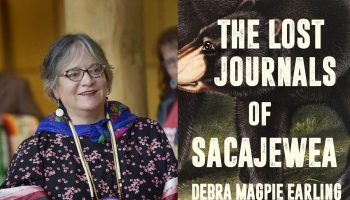
While conducting research for his book The Death and Life of the Great Lakes, environmental journalist and author Dan Egan began learning about toxic algae in Lake Erie and realized how much it was affecting the ecosystem.
That inspired him to write this week’s Chautauqua Literary and Scientific Circle selection, The Devil’s Element: Phosphorus and a World out of Balance, which connects with the Week Three theme “What We Got Wrong: Learning from Our Mistakes.”
The Devil’s Element explores the use of phosphorus throughout history and its future, as well as the damages the element causes in addition to its benefits. Egan – who spoke during Week One of Chautauqua’s Lecture Series in 2019 on the topic of “Moments That Changed the World” about The Death and Life of the Great Lakes – will discuss and read from his latest book at 3:30 p.m. today in the Hall of Philosophy.
Egan has twice been a finalist for the Pulitzer Prize, and was a reporter for the Milwaukee Journal Sentinel, where he covered the Great Lakes from 2002 to 2021. His work has garnered accolades like the Alfred I. duPont–Columbia University Award, John B. Oakes Award, the AAAS Kavli Science Journalism Award, and J. Anthony Lukas Work-in-Progress Award.
In his discussion today, he will explore how phosphorus is used as a resource and the harm it causes as a waste. It’s a rich fertilizer, and a boon to croplands, but runoff is harmful to waterways, creating toxic algal blooms and “dead zones.”
“It’s kind of a paradox that it’s such a force for good, and also really bad stuff,” Egan said.
Egan first got interested in environmental issues when working at Idaho Mountain Express in 1992, covering the area of the Sawtooth Mountains.
“Wolf reintroduction and salmon restoration and grizzly bear recovery were all hot button issues, and I had no training in covering science or environmental issues,” he said. “I just got thrown into it and found I really liked not just the science and the environment part of it, but the tension was that humans tried to make a living off the land, as well.”
With The Devil’s Element, Egan wanted to bring the issue of over-reliance on phosphorus to the attention of people who might not have known about it, or might not have cared. He wants people to realize that the food on their table, and the societal choices they make, are connected to the health of their water.
“The issues I’m writing about can’t be solved by just one person changing the way he or she farms or eats. It’s going to take a systemic change. It’s going to take new laws,” he said. “We’ve got such an unsustainable system; clean water and healthy food shouldn’t be mutually exclusive, but too often with the system we have set up, they are. That’s disturbing and shocking.”
The book was chosen as a CLSC selection because it gives a look into what we have gotten wrong — in this case, overusing phosphorus — and how we can learn from our mistakes, said Manager of Literary Arts Stephine Hunt.
“Even though the book itself is more dynamically engaging with the challenges of phosphorus, it does have moments where he’s turning to the possible solutions,” Hunt said.
Egan hopes people leave his CLSC presentation with a new appreciation for the fragility of their waters, and more information about the path they can take for a more sustainable future.
“This isn’t just the cost of living in modern America, it’s the result of failure of the Clean Water Act to adequately address nutrient pollution, and its not too late to fix it,” Egan said. “Not by a long shot.”




